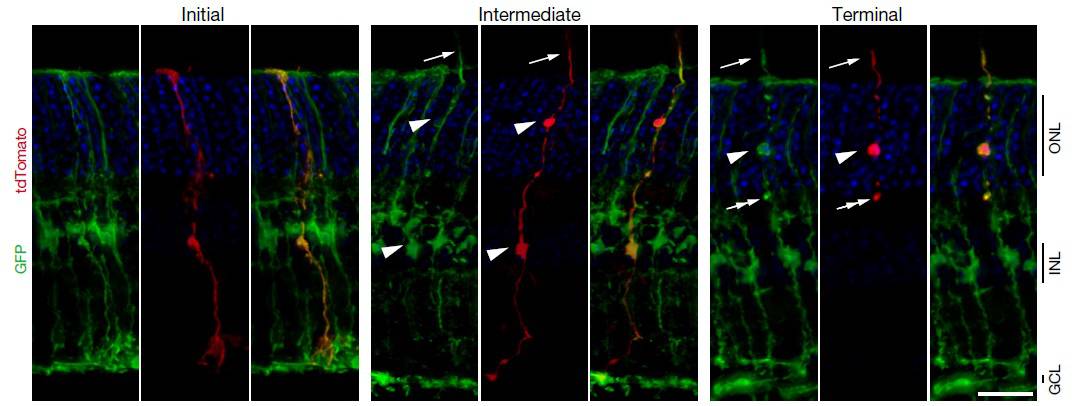
An international research collaboration has successfully restored vision in mice by activating retinal stem cells, a feat that has never been achieved before. The researchers note that their study could transform treatment for patients with retinal degenerative diseases, which currently have no cure (Nature 10.1038/s41586-018-0425-3).
“This study opens a new pathway for potentially treating blinding diseases by manipulating our own regenerative capability to self-repair,” explains lead investigator Bo Chen from Icahn School of Medicine at Mount Sinai. “This is the first step to finding promising cures for patients that involve self-repair as opposed to medicine or invasive procedures.”
In cold-blooded vertebrates such as zebrafish, Müller glia cells (MG) act as retinal stem cells that can replenish damaged retinal neurons and restore vision. In mammals, however, MGs do not have regenerative capability after photoreceptors are lost, and therefore retina damage cannot fix itself. As a result, diseases like macular degeneration or retinitis pigmentosa that kill retinal cells are often irreversible. Chen and colleagues hypothesized that if they could somehow reactivate the MGs, they could bring back vision.
To achieve this, the team performed a two-step gene transfer to reprogram MGs into blind mice. First, they used a gene transfer process to activate dormant stem cells to turn them into active stem cells. The second step involved another gene transfer to help these stem cells develop into rod photoreceptor cells, the most abundant cell type in the retina. Rod photoreceptor cells are the first step to sensing light in the retina; they then transmit to other cells in the retina, which send signals to the brain to enable sight.
After this two-step reprogramming, new rod photoreceptors were generated and integrated into the existing retinal structure. The investigators saw no difference between these new cells and real rod photoreceptor cells: the new cells sensed light, which then triggered information to be sent to the visual cortex and restored function of the visual pathway.
Between four and six weeks after the reprogramming, the blind mice were able to sense light and regained their vision. While vision was restored to some degree, the researchers could not measure the degree of improvement, and must perform further tests to find this out.
“This could lead to extraordinary opportunities in the future where we can potentially use the same strategy to reactivate these stem cells in the diseased human eye,” said Chen. “If this works, this could transform the way we treat patients with retinal disease and possibly learn how to cure other types of eye disease like glaucoma.”



